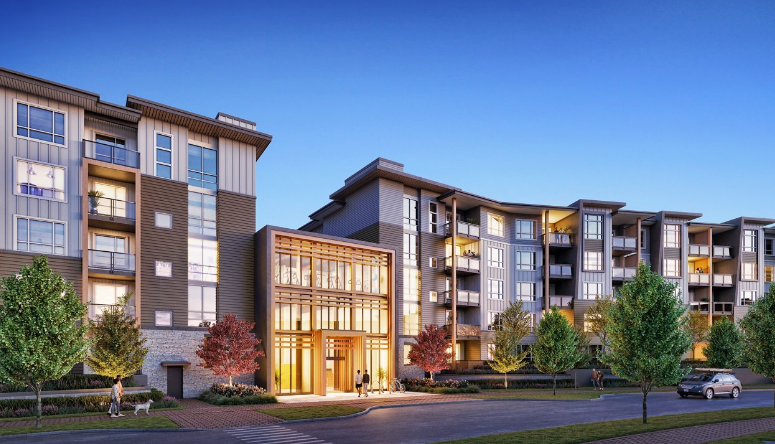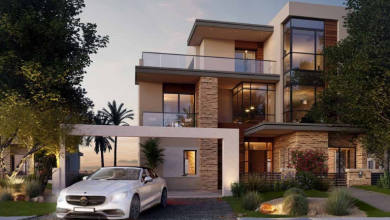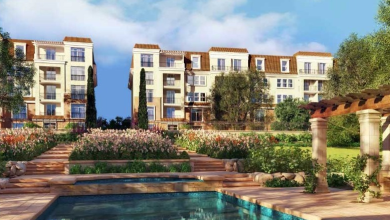
The Egyptian Real Estate Market: A Paradox of Resilience Amid Economic Headwinds
Egypt’s real estate market presents a paradox: it is a thriving safe haven for capital amidst significant national economic challenges. The market’s resilience is directly linked to the country’s economic struggles, creating a unique investment environment. For investors, understanding the interplay between macroeconomic policy, government intervention, and shifting consumer behavior is key to navigating the opportunities in Egyptian properties.
Economic Drivers and Market Realities
The current real estate boom is largely a reaction to aggressive monetary policies by the Central Bank of Egypt (CBE). To combat soaring inflation, the CBE sharply devalued the Egyptian Pound (by over 38% in March 2024) and raised interest rates to unprecedented levels (27.25% for deposits).
These actions have had a profound effect:
- Flight to Safety: With the currency’s value eroding, investors and everyday citizens have rushed to convert their savings into tangible assets, primarily real estate, to preserve capital. Property has become the nation’s most critical inflation hedge.
- Nominal vs. Real Growth: This surge in demand caused nominal house prices to skyrocket, with some projects reporting price hikes of over 100%. However, this growth is largely illusory. When adjusted for inflation, the market has seen a decline in real terms. For example, a nominal price increase of 18.2% in 2024 corresponded to a 8% decline in real terms. This distinction is crucial: the market is driven by wealth preservation, not purely speculative growth.
Two powerful forces underpin the market’s stability:
- Government Support: The government has actively supported developers by extending project timelines and reducing fees to ease liquidity pressures.
- Foreign Capital: Massive foreign direct investment (FDI) has injected vital liquidity and confidence. The flagship example is the $150 billion Ras El-Hekma project on the North Coast, a partnership with the UAE’s ADQ, which is set to transform the region into a global destination.
This reliance on external support highlights a potential vulnerability. The market’s equilibrium is heavily dependent on continued government aid and the sustained inflow of foreign investment.
A Deep Dive into Residential Properties
Egypt’s residential strategy is focused on urban decentralization through the creation of “New Cities” like the New Administrative Capital (NAC), New Cairo, and 6th of October City. These master-planned communities are designed to offer a higher quality of life and have become magnets for the middle and upper classes.
East Cairo: New Cairo & The 5th Settlement
- Profile: This area is the established premium hub of Greater Cairo, known for high-quality construction and a vibrant, self-sufficient ecosystem of retail and corporate offices.
- Property Types & Pricing:
- Apartments: The entry point starts around EGP 4 million in a compound like Mountain View iCity, while a luxury unit in Emaar’s Mivida can exceed EGP 25 million.
- Duplexes & Villas: A ready-to-move duplex can be found for around EGP 11.3 million. Standalone villas represent the peak of luxury, with prices ranging from EGP 42 million to EGP 79 million in prestigious compounds like Katameya Dunes and Mivida.
- Developer Focus (Emaar’s Mivida): This project serves as a benchmark for fully integrated communities, offering a mix of properties and strong rental demand, with apartment rents ranging from EGP 60,000 to EGP 120,000 per month.
West Cairo: Sheikh Zayed & 6th of October City
- Profile: This corridor offers a quieter, suburban, and family-centric lifestyle with a focus on spacious landscaped compounds and larger homes.
- Property Types & Pricing:
- Twin House: A popular semi-detached villa option, with prices ranging from EGP 6.6 million to EGP 26.65 million depending on the compound.
- Standalone Villas & Palaces: A villa in a newer project can be priced around EGP 15 million, while a grander villa in an established compound like Allegria can cost EGP 48 million. At the very top, palatial estates can reach EGP 220 million.
Developer Spotlight: Mountain View
Mountain View is a leading developer known for creating themed communities and innovative products. Its signature creation is the “iVilla,” a duplex-style unit with a private entrance and a garden or roof terrace. This design cleverly bridges the gap between an apartment and a villa, offering privacy and amenities at a more accessible price point, which strongly appeals to a younger, affluent demographic.
The Booming Coastal and Vacation Market
Egypt’s coastlines are epicenters of investment, catering to a powerful demand for lifestyle, leisure, and high-yield rentals.
The North Coast (Sahel)
- Market Dynamics: The Sahel has evolved from a seasonal holiday spot to a premier investment market. The colossal Ras El-Hekma development is a game-changer that is reshaping the entire region’s future, creating a halo effect that elevates property values all along the coast.
- Project Focus (Emaar’s Marassi): As the gold standard of luxury coastal living, Marassi is a fully integrated resort town.
- Pricing: The market here covers a vast spectrum. A 1-bedroom chalet can start from EGP 6-12 million. A penthouse can cost EGP 47 million, and a standalone villa can reach EGP 90 million. At the pinnacle of the market, a beachfront Palace in Marassi Bay can command an extraordinary EGP 300 million.
The Red Sea Riviera
- Market Dynamics: This market, including hubs like El Gouna and Soma Bay, is driven by international tourism and foreign investment. It offers year-round attractions like world-class diving, marinas, and golf courses.
- Project Focus (Soma Bay): This self-contained peninsula is a prime example of an integrated resort.
- Pricing: A chalet or cabin can be priced around EGP 8-9 million. A ready-to-move-in standalone villa is listed at EGP 18.5 million, while an off-plan villa is priced at EGP 23 million.
The Engine of Growth: Commercial Properties
Egypt’s commercial real estate market is expanding dynamically, with its value projected to reach as high as $32.57 billion by 2033. This growth is fueled by urbanization and is deeply interconnected with the residential boom.
- Key Segments:
- Office Space: Demand is high for modern, sustainable, and “green” buildings with LEED certifications in East and West Cairo.
- Retail & Hospitality: The focus is shifting towards “experiential” mixed-use developments that combine shopping, dining, and entertainment.
- Industrial & Logistics: The explosion of e-commerce is creating unprecedented demand for modern warehouses and distribution centers.
The relationship is symbiotic: new residential areas create a captive consumer base, which in turn fuels demand for retail, offices, and logistics, making the residential areas even more attractive.
Comparative Analysis and Unit Types
Understanding property terminology is essential for navigating the market.
- Key Unit Types:
- Apartment/Penthouse: Standard and premium units in a multi-story building.
- Duplex: An apartment spread over two floors.
- Townhouse: An attached house sharing side walls with neighbors.
- Twin House: A semi-detached home sharing one central wall.
- Standalone Villa/Palace: A fully detached, independent house on its own plot, with palaces being exceptionally large and luxurious versions.
- Chalet: The primary unit type in coastal resorts.
High-Level Market Comparison
| Metric | Residential Properties | Coastal Properties | Commercial Properties |
| Primary Driver | Inflation Hedge, Urbanization | Tourism, Lifestyle Investment | Economic Growth, FDI |
| Key Locations | New Cairo, Sheikh Zayed | North Coast, Red Sea | East/West Cairo, Suez |
| Target Investor | Local Investors, End-users | HNWIs, Foreign Investors | Corporations, Funds |
| Risk Factors | Affordability Crisis | Seasonality, Geopolitical | Economic Downturns |
| Future Outlook | Strong, but risk of price correction | Very Strong (Ras El-Hekma) | Strong, tied to economy |
Property Price Snapshots (EGP)
| Location | Unit Type | Average Price Range |
| New Cairo (Mivida) | Apartment | 8M – 32.5M |
| New Cairo (Mivida) | Standalone Villa | ~79M |
| West Cairo (Etapa) | Twin House | ~6.6M |
| North Coast (Marassi) | Chalet | 12.6M – 30.75M |
| North Coast (Marassi Bay) | Palace (Villa) | ~300M |
Investment Conclusion and Future Outlook
The Egyptian real estate market operates in a state of dual reality. For investors, it’s a high-performing asset class and a critical hedge against inflation. For the average Egyptian, however, it represents a looming affordability crisis.
Strategic Recommendations for Investors:
- For Capital Preservation: Focus on prime residential properties in established compounds in New Cairo and Sheikh Zayed.
- For High Growth and Rental Yield: The greatest potential lies in coastal properties on the North Coast, especially those near the future Ras El-Hekma site.
- For Diversified Returns: Consider commercial properties, such as LEED-certified offices or logistics facilities, which tap into the fundamental drivers of Egypt’s economic growth.
The market is expected to remain resilient into 2025, driven by local demand and foreign investment. The primary challenge will be managing the affordability gap. In response, developers will likely introduce more flexible payment plans and develop smaller, more affordable units to cater to a broader population segment. Navigating the balance between high investment demand and the need for accessible housing will define the market’s next chapter.



